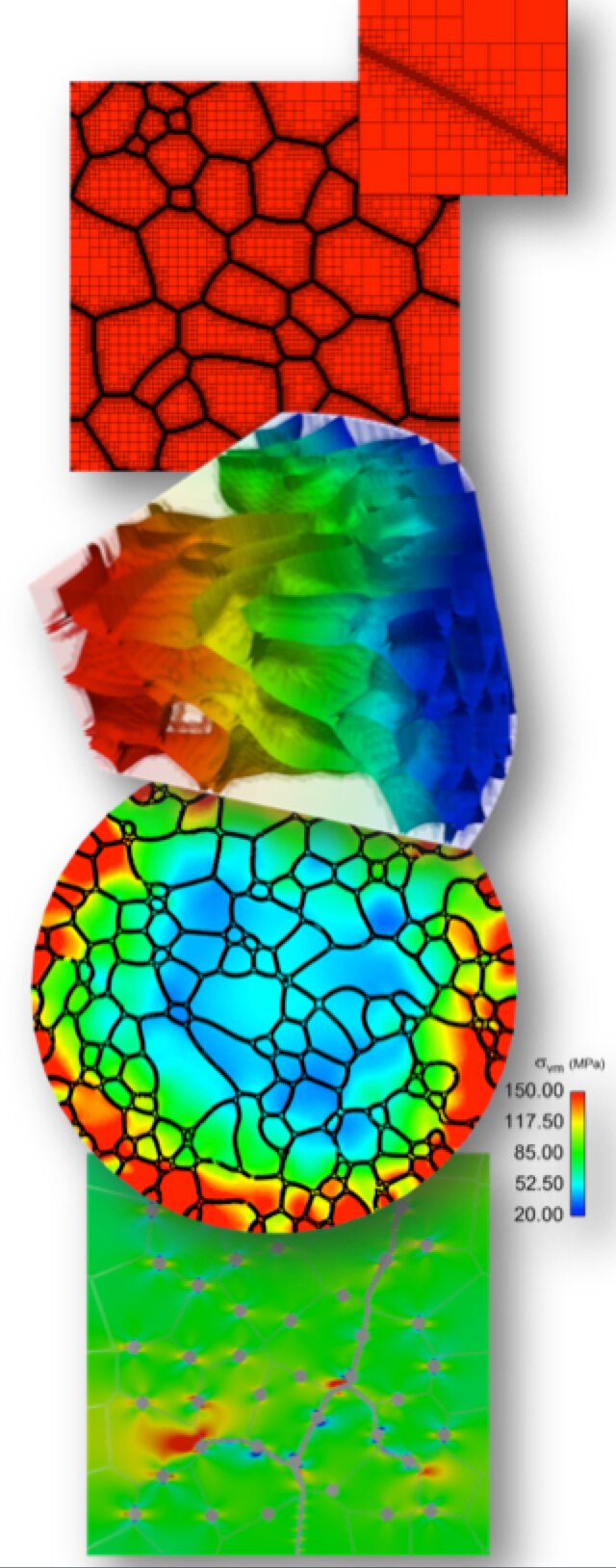November 26, 2019 feature

In recent decades, technological advances have opened up exciting new possibilities for research in a variety of fields, including physics. Nonetheless, creating sophisticated simulations to represent or address multiphysics problems using computing resources can still be very challenging.
Multiphysics problems tie together topics from different subfields of physics, which are typically based on different theoretical constructs and knowledge. Therefore, creating a multiphysics simulation often requires a variety of simulation tools developed by researchers who are experts in different physics subfields.
Combining these tools can be both challenging and time-consuming. In addition, the resulting multiphysics simulations will unavoidably be more prone to errors, as they will need to incorporate elements created using entirely different platforms.
Aware of these challenges, researchers at Idaho National Laboratory and the University of Texas at Austin developed a new platform designed to facilitate the production of multiphysics simulations, called the multiphysics object-oriented simulation environment (MOOSE). MOOSE, presented in a paper pre-published on arXiv, provides a plug-in infrastructure that greatly simplifies physics definitions or constructs, material properties and post-processing.

"MOOSE came about because we wanted to apply our expertise in software architecture to create a powerful, but easy-to-use tool for computational researchers and scientists," Cody J. Permann, one of the researchers who carried out the study, told TechXplore. "We felt that there was an opportunity to take the next logical step, building on the work of many other highly respected researchers responsible for the development of powerful parallel solvers (PETSc) and a flexible finite element library (libMesh)."
MOOSE is a high-level pluggable architecture that allows engineers and scientists to leverage the power of large supercomputers when trying to solve complex real-world problems, even if they have little or no knowledge of parallel programming techniques. Since its release in 2014, it has consistently grown in popularity, and it is now used by several research teams worldwide.
"While there are other open-source packages that have similar goals, MOOSE contains several unique capabilities that make it an attractive framework for solving many types of problems," Permann explained. "MOOSE empowers developers by giving them a real C++ application that they can customize for individual needs."
Among other things, the unique platform developed by Permann and his colleagues allows researchers to create coupled simulations by tying multiple physics applications together. It also contains a set of free, community-built and maintained physics modules that can be used as building blocks to produce highly complex multiphysics simulations.

"MOOSE has been leveraged to create a wide range of simulations ranging from microscopic simulations of fuel inside of a nuclear reactor to large-scale environmental simulations studying impacts of mining operations," Permann said.
MOOSE has already been used by research teams conducting studies investigating a variety of topics, including nuclear physics, geothermal science, seismic events, fluid flow and manufacturing processes. The platform can be scaled up to produce high-fidelity simulations on large supercomputers, yet it can also simply be used by graduate students to create quality simulations summarizing study results on their laptops. As MOOSE is free and can be accessed on a variety of computers, it ultimately allows researchers with different levels of expertise and at different institutions to produce publication-quality results in less time and with smaller budgets.
"We have several improvements planned to improve parallel efficiency and reduce memory usage. We are developing several new physics modules, along with enhancements to the existing modules," Permann said. "MOOSE is widely used by researchers at several universities, and we encourage researchers to contribute general capabilities back to the framework so that the entire modeling and simulation community benefits."
More information: MOOSE: enabling massively parallel multiphysics simulation. arXiv:1911.04488 [cs.MS]. arxiv.org/abs/1911.04488
© 2019 Science X Network
Citation: MOOSE: A platform to create complex multiphysics simulations (2019, November 26) retrieved 26 November 2019 from https://techxplore.com/news/2019-11-moose-platform-complex-multiphysics-simulations.html
This document is subject to copyright. Apart from any fair dealing for the purpose of private study or research, no part may be reproduced without the written permission. The content is provided for information purposes only.
